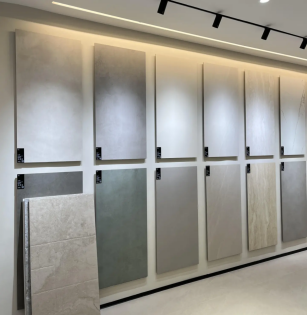How to Choose Good Tiles?
1.Match Tiles to the Space
Kitchens: Glossy, stain-resistant tiles make cleaning effortless. Matte finishes trap grease.
Bathrooms: Prioritize slip resistance (look for R10+ rated tiles).
Balconies: Frost-proof, fade-resistant porcelain tiles withstand weather extremes.
2.Quality Checks
Water absorption: Drip water on the back—good tiles repel it.
Hardness: Scratch-test with a key; a metallic "ping" indicates high density.
Warpage: Press two tiles face-to-face—uneven gaps mean poor flatness.

3.Size Smartly
While large-format tiles create an undeniably impressive visual impact, practical considerations must be weighed: First, installation costs for tiles above 800x800mm typically increase labor fees by 20-30%. Second, expect higher material wastage, especially in irregular spaces requiring complex cuts. Finally, oversized slabs often incur additional handling charges for upper-floor delivery.
For compact bathrooms, 300x300mm to 800x800mm floor tiles prove most practical, allowing proper drainage slope formation. Kitchen walls achieve optimal value with 300x600mm tiles, minimizing grout lines without excessive waste. Living areas exceeding 30m² may benefit from 600x1200mm formats to enhance spatial continuity.

4.Color & Lighting
Showroom lighting lies. Always take samples home—gray tiles under warm lights can look blue in daylight. Avoid high-gloss in sun-drenched rooms (glare issues) and dark tiles in dim spaces (cave effect).
5.Buying Tips
Beware "discount" tiles—batch variations cause mismatches.Order 5-8% extra for cuts/waste. A skilled installer matters more than expensive tiles. Bad layout ruins even premium designs.

Final Rule: Balance cost, durability, and aesthetics. Trends will fade, timeless tiles will not.
 What are the common challenges in China sourcing, and how can they be overcome?
What are the common challenges in China sourcing, and how can they be overcome?
 How do enterprises start sourcing products from China?
How do enterprises start sourcing products from China?
 Tips to consider when sourcing in China
Tips to consider when sourcing in China
 China-US Suspend 24% Tariffs! 90-Day Grace Period Brings Economic Windfall
China-US Suspend 24% Tariffs! 90-Day Grace Period Brings Economic Windfall
